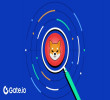7 November 2025
10 Necessary Tools For NFT Developers in 2022
Whether it's customer relationship management (CRM) software, an e-commerce network, or even a smartphone application, businesses now rely on electronic technology more than ever. It still holds true in the NFT sector: you will ought to make use of a variety of virtual channels in order to create a fantastic compilation, market it effectively, and maintain your audience's interest and loyalty. The excellent news is that there's a plethora of options available; innovators in the IT industry have been hard at work developing a variety of resources that make it simple to create and mint NFTs and to establish robust communities to support your continued efforts.
Also Read: 5 Most Popular NFT Marketplaces Of 2022
Several artists have found that working in the creative field is difficult. It takes a lot of time, effort, company, language skills, as well as confidence to evaluate, disseminate, discover the proper alliances, gather, and grow a community of supporters.
Also Read: 5 Biggest Metaverse College Challenges
As of right now, the following 10 tools are necessary for NFT developers:
1. Twitter
Since Twitter's inventor, Jack Dorsey, is a Crypto enthusiast, it's no wonder that several NFT developers turn to the platform to connect with like-minded individuals and build communities around their creations. Developers enjoy that they are able to keep their audience updated with frequent posts, conduct their own NFT drops among followers, promote NFT collections, and host public competitions.
2. Discord & Disboard
The perfect audiences for your work may be found on Discord, a social media app for creative people. This platform may be tailored to suit a specific function, making it useful for both end users and system administrators. In this example, we're including not one but 2 platforms, with Disboard serving as a helpful tool for interacting on Discord. Disboard is a platform for discovering new Discord channels based on keyword searches.
3. Buffer
It's really no surprise that NFT makers would wish to utilize these networks to access prospective purchasers and existing communities, given that the typical person spends over 2.5 hours every day on social networking sites. Buffer is an all-inclusive social media management platform that can be used to schedule posts, organize groups, and increase participation. It's possible to plan, develop, schedule, and automate posts across several platforms, flooding communities with engaging material to maintain their attention.
4. Lynkfire
Lynkfire is a fantastic program for NFT musicians. It's a hub for publishing your art as well as biography to the world. Additionally, it has its own unique capabilities, including the ability to attach photos toward any hyperlink. Lynkfire allows you to customize the link boxes' dimensions and layout, allowing you to make your material look larger or smaller depending on how timely it is.
5. Webflow
You should have an internet site to do things like introduce a new catalog, interact with customers, share your plans, and so forth. Therefore, if you want to make something that is both beautiful and functional, Webflow is the tool to use. It's ideal for beginners since its virtual pictorial editing platform enables anyone to create, construct, as well as publish websites without any specialized expertise.
6. OnCyber
OnCyber provides a VR perspective on visual art. It serves essentially as an online museum or gallery that allows you to display your works or collections. Gallery layouts may be customized to suit your needs, and viewers can zoom in to read the titles and descriptions of individual works of art. All that takes to join the platform is to download the Metamask wallet and link it to the website with only two clicks. Afterwards, choose a background that depicts your perfect art gallery. When you're done, post your links in the group's Discord.
7. NiftyKit
You may be familiar with NiftyKit, a no-code framework offering that enables users to construct, manage, as well as sell NFTs using their personal bespoke smart contracts. NiftyKit is advantageous because, despite competing platforms, customers don't need Cryptocurrency to join as well as generate their initial NFT; instead, they pay a monthly fee to get access to NiftyKit's NFT minting platform, where they may design and administer their own NFTs and smart contracts.
8. Pinata
Pinata is a must-have app for anybody looking to make a sale on the Ethereum Platform. This platform, developed by Kyle Tut and Matt Ober, is a simple method of publishing and managing material over IPFS. To be more specific, IPFS is the mechanism which regulates when and how data pertaining to a certain commodity is sent. That's how you ensure you retain legal rights to your NFT art.
9. VoxEdit
Changes everything for voxel designers. The Skeleton System of VoxEdit facilitates the creation of NFTs, which can be published and sold via The Sandbox using an easy keyframing mode. Animators appreciate it because it allows them to separate away from the crowd without requiring them to be technical experts.
10. Clubhouse
If you're looking to expand your horizons, get some help with a project, or just chat with like-minded people, ClubHouse is the place to be. With a sizable NFT crowd always online and new discussion forums opening up almost every hour, this is a great place to discover engaging conversation no matter the time or place. The very first step in using ClubHouse is to have the application be downloaded as well as create a profile.
The Bottomline
We trust that you now have a fairly complete set of resources at your disposal to aid you in every step of your NFT journey, from conceiving the scope of your collection to designing, uploading, as well as minting your NFTs.
Disclaimer: The author’s thoughts and comments are solely for educational reasons and informative purposes only. They do not represent financial, investment, or other advice.






